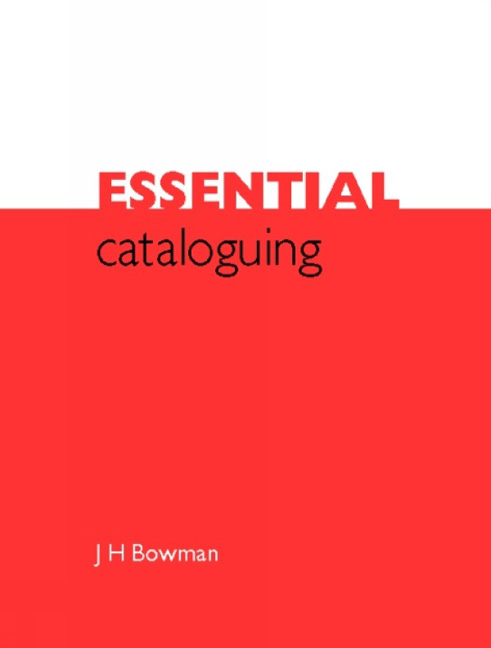Book contents
- Frontmatter
- Contents
- Note to this impression
- Acknowledgements
- 1 Introduction
- 2 Background to cataloguing and AACR2
- 3 Structure of AACR2 and of the MARC 21 format
- 4 Description
- 5 Access points
- 6 Multipart works
- 7 Headings for persons
- 8 Headings for corporate bodies
- 9 Authority control
- 10 Uniform titles
- Bibliography
- Appendix: Catalogue records in MARC 21 format for the examples in this book
- Index
8 - Headings for corporate bodies
Published online by Cambridge University Press: 09 June 2018
- Frontmatter
- Contents
- Note to this impression
- Acknowledgements
- 1 Introduction
- 2 Background to cataloguing and AACR2
- 3 Structure of AACR2 and of the MARC 21 format
- 4 Description
- 5 Access points
- 6 Multipart works
- 7 Headings for persons
- 8 Headings for corporate bodies
- 9 Authority control
- 10 Uniform titles
- Bibliography
- Appendix: Catalogue records in MARC 21 format for the examples in this book
- Index
Summary
We have seen the definition of a corporate body, and you have to keep this in mind. In this section we look at the forms of name to be used for corporate bodies.
I shall not entirely follow the order of AACR2 here, because it is more helpful to bring certain topics together which in AACR2 are scattered.
The first part of the chapter covers points which apply to all kinds of corporate name; this is then followed by sections on Conferences and Government names specifically.
As you might expect, from what you have seen of personal names, the basic rule in establishing the form of name for a corporate body is that you use the name by which it is commonly identified. In order to determine what this is, you use, in this order of preference:
• items issued by the body
• reference sources.
Punctuation and spacing
Notice the rule about full stops and spaces in headings. If you have a group of initials with full stops, do not put a space after each full stop until you come to the last one, the one immediately preceding the rest of the name. You would therefore put, e.g.
✓ F.W. Woolworth Company
not
✗ F. W. Woolworth Company
Notice that the ampersand should be used only if it is used in the name of the body concerned; it should not be introduced as an abbreviation.
In some systems there is a policy of converting it into ‘and’ because sometimes it causes difficulties in filing.
All kinds of elements may appear in the name of a corporate body. This includes elements in parentheses, if they happen to be part of the official name.
Examples
Marlborough Fine Art (London) Ltd Southwick (Sussex) Society
Distinguish this kind of element in parentheses from the additions that you sometimes have to make to names to differentiate different bodies with the same name (see below, pp. 157–9).
Capitalization
Remember that when you are constructing a heading for a corporate body, of whatever kind, you follow the rules appropriate for the language in question. This means that in English you would put capital letters for the principal words in the name (not for words like ‘and’, ‘of ‘, ‘the’, etc.). In many languages you would not use capitals.
- Type
- Chapter
- Information
- Essential Cataloguing , pp. 153 - 172Publisher: FacetPrint publication year: 2003



